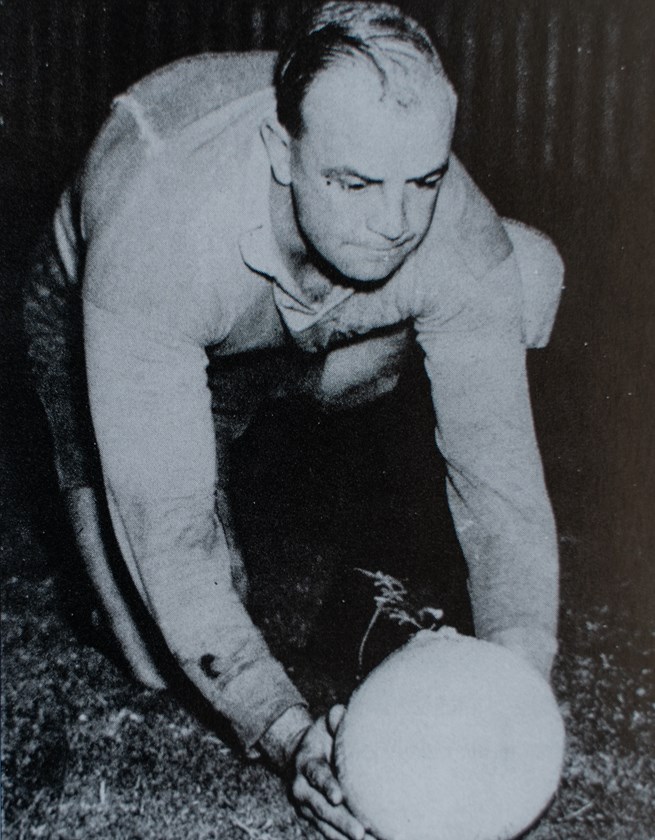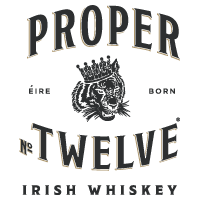As the Club prepares for the 22nd annual Anzac Day Cup clash with St George Illawarra, we return to a proud chapter of Roosters history through our Wartime Jersey, featuring Bondi Blue, one that represents wartime hardships, on-field success and coincided with the end of the Second World War.
With tensions high as ever at the peak of World War II as fear and doubt cast over the lives of Australians through the 1940s, Rugby League was continually at the heart of the wartime effort - and Eastern Suburbs were no different.
Captain Ray Stehr retired in 1939 to enlist in the AIF, eventually making an emphatic return, as the first-grade side competed in fundraising matches against representative army teams in July and September of 1942.
The number of Clubmen enrolling in the services while creating and supporting events to raise funds grew exponentially with each coming month.
Even the iconic Bondi Beach was lined with double barbed wires to ward off potential invaders - a sign of the desperate measures set out to ensure the safety of Sydneysiders.
Uncertainty reigned, bleeding into the clubs of the NSWRFL. Team line ups depended on the success of servicemen travelling back from country or interstate camps to take their place - teams picked on Tuesday night would be considerably different from those training on Thursday, and come Saturday the line up was unrecognisable.
Annual interstate matches were put on hold, but the domestic competition continued as Jersey Flegg, Chairman of the Australian Rugby League (and Easts’ inaugural captain), declared the sport a necessity for the “promotion and maintenance of national fitness".
Season 1944 represented a changing of the guard for Eastern Suburbs; captain Harry Pierce retired mid-season after just seven games, as did District Secretary Johnny Quinlan, while the community mourned the passing of Club President and longtime worker Frank Haron - who had been involved with the Tricolours since the establishment of the game.
But the biggest change came in the form of the jersey, with the Club making the first significant change to their look since their foundation in 1908 - and one that would later be revisited in the iconic design worn today.
In the first match of 1944, the Eastern Suburbs District Rugby League Football Club ran out against Western Suburbs wearing a light blue jersey adorning a red and a white ‘V’ - the first time ever that any Easts team would pull on the chevron that we have come so accustomed to.
With striped jerseys prohibited due to the continuing strain of war-time rations, the Club opted to temporarily abandon the famous Tricolours, with changes in jersey designs across the competition employed to conserve materials for the war effort. Coupled with the costly and intricate design of the original, the new look was initially unpopular, but according to the 1944 annual report was one that ‘looked very well on the field’.
Although a place in the finals would elude the Red, White and now Bondi Blue, it was indicative that change was on the horizon both on and off the field and the following year was one that the world had awaited half a decade for and one that the Eastern Suburbs would savour for decades to come.
There were blackouts imposed after the assault on Sydney by the Japanese midget submarines. That season (1942), for training Souths and Easts shared use of the Sydney Sports Ground. We would have 20 minutes each on a Tuesday and Thursday - alternating first use of the ground weekly. As darkness came, the lights would be off - and we’d head home.
Wally O'Connell Easts 1945 Premiership Winning Five-Eighth
On September 1st, 1945 - the first day of spring - Easts claimed their 9th Premiership in a famous comeback victory against Balmain, highlighted by a starring performance from lock forward Dick Dunn.
Dunn etched his name in Club history, scoring three tries and kicking five goals - including the match-winner - as he tallied 19 of Easts’ 22 points in what is affectionately known as ‘Dick Dunn’s Day’.
The crowd of 44,585 had more to celebrate one day later as Japan formally signed a letter of surrender, effectively ceasing the war.
In 1946 the Club continued to don the jersey, but with no conflict in the world, Easts reverted back to the all too familiar Tricolours the following season. However, it wouldn’t be long before the influence of the strip was drawn upon, as the current design we have come to know and love adopted in 1954 - featuring a Red and White chevron just as the Wartime jersey had.
| Players who wore the Bondi Blue 1944-46 |
|---|
| Tim Allen, Jack Arnold, Ross Bassingthwaite, Ernie Berrell, Brian Bevan, Ross Chapman, Thomas Chilvers, Jack Coll, Lionel Cooper, Keith Dallwitz, Percy Dermond, Jack Dixon, Doug Doney, Dick Dunn, Roy Dykes, M Evans, Bob Farrar, Doug Fry, Ken Foster, Don Gulliver, Ernie Hawkins, Sid Hobson, Johnny Hunter, John Hurst, Tommy Kaine, Sel Lisle, George McCaffrey, Harry Martin, Matthew McCoy, Ross Nixon, Harold O'Brien, Wally O'Connell, Arthur Oxford, Henry Pierce, Len Portsmouth, Raymond Pratt, Alan Quinlivan, Lou Rafferty, Wally Rees, Norm Rogers, Bert Rollason, Lee Rose, Lloyd Russell, Alan Schafer, Roy Searle, Johnny Smith, Ray Stehr, Roy Street, Paul Tierney, George Watt, Jack Williams |
It looks like you may be using adblocking software to view this site.
Many features on the site, such as video playback, may not work properly when using adblocking software.
Please whitelist our domain or disable your adblocker to access all features and videos.
Round 7 Match Highlights: Roosters v Dragons
A brief comeback in 2008 and 2009 was short-lived, but in 2021 we took the next step in proclaiming our proud and esteemed history, the famous Bondi Blue made a welcome return in 2021 as the Roosters trounced the Dragons in a 34-10 victory.
The jersey will be entrenched in the Anzac Day Tradition for years to come.
The Bondi Blue jersey of 1944-1946 not only represents a period of transition and success at the Club, but is a reminder of those who served and sacrificed during the war effort, forever immortalised in the history of the Eastern Suburbs District Rugby League Football Club.






















